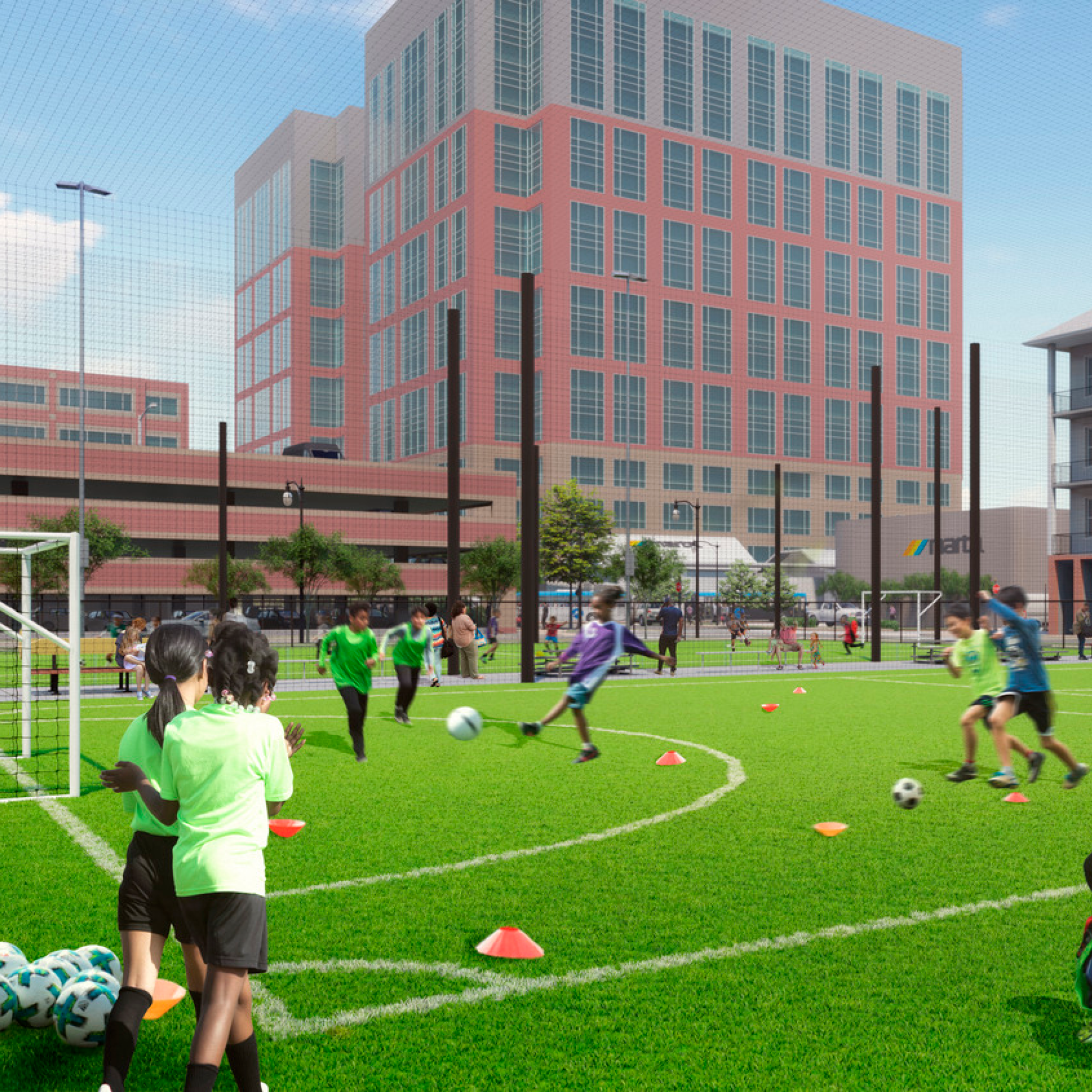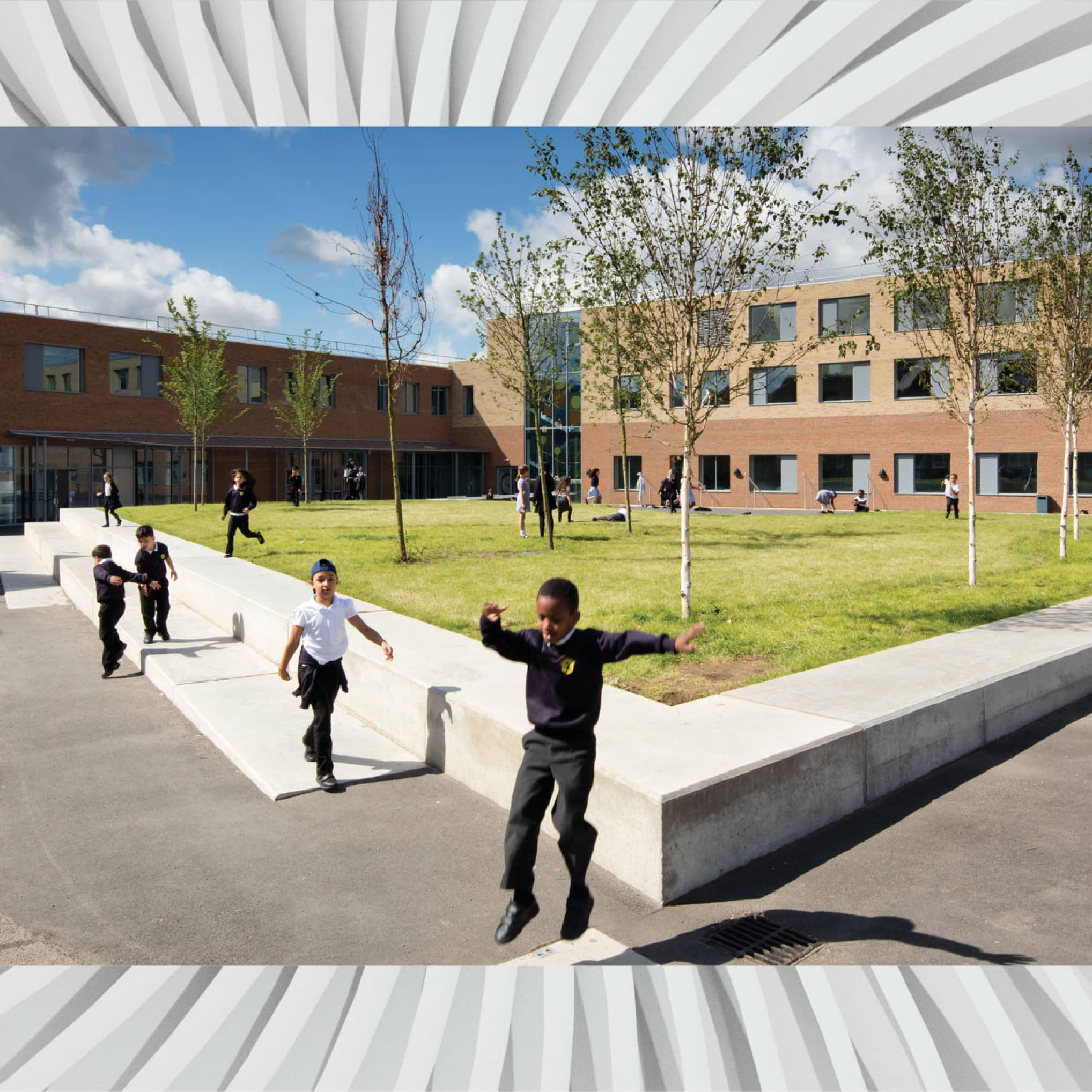
Limitless Panel Weighs How Transit-Oriented Development Can Curb Inequity Among Neighborhoods
The term “return on investment” (ROI) usually hinges on money. Investors often look at how much money a project will bring back to them and in some cases, to the surrounding communities, to help determine whether they want to commit to the project.
An HKS Limitless panel in June explored how the approach to ROI should evolve to consider how projects also influence the quality of life of the people they touch rather than focusing solely on the money they reap.
The virtual panel, which focused on equitable development in transit, brought together experts from across the U.S. to discuss how they’re planning and designing for social equity in transit-oriented developments to build up communities that are often left behind in development decisions.
HKS Senior Urban Designer Sheba Ross moderated the session. Panelists were: HR&A Advisors Partner Shuprotim Bhaumik; Fairfax County Deputy Executive Rachel O’Dwyer Flynn; Debbie Frank, Director, Metropolitan Atlanta Rapid Transit Authority (MARTA) ; and Smart Cohort co-founder, Carla Mays.
Before the panel, keynote speaker Rosalynn Hughey, deputy city manager of San Jose, talked about the activity in that city. She said San Jose, like many other cities across the country, has turned to transit oriented developments in hopes of pulling underserved communities out of marginalization and boosting access to essential services such as health care, education, retail, and more.
Hughey said that Black, indigenous and Latinx households in San Jose disproportionately face housing challenges including unaffordability, overcrowding, poor housing quality, and risk of eviction.
“And yes, this is in Silicon Valley – the hottest economy on the globe,” Hughey said.
The city has partnered with nearby corporations to build housing and expand transit options for a variety of income levels, Hughey said. In 2016, Google approached San Jose to bring new jobs and create a dynamic and inclusive urban district in downtown San Jose. After dozens of meetings with Google representatives, community-based-organizations, and city staff, distrust among residents slowly shifted to excitement and hope for the project.
When completed, the mixed-use development is expected to bring 7.4 million square feet (687,000 square meters) of new office space, 4,000 new housing units — with 1,000 of them tagged as affordable housing — and 15 acres of parks, plazas and green spaces for the community to enjoy.
“We know that by helping those most in need, we actually lift up our entire community,” Hughey said. “This work is grounded in ‘we’. There’s no choosing sides because we see everyone as our neighbor.”
We know that by helping those most in need, we actually lift up our entire community.
After Hughey’s keynote, the panelists shared how they are tapping into transit-oriented development to fuel social equity in their communities.
Bhaumik’s practice focuses on economic development strategy and public-private partnerships. He said transit-oriented developments aren’t new; they go back hundreds of years to the colonial era in Africa and Asia, where railroad communities were established for economic extraction.
“To think about the inequities that are inherent in transit planning and think about how we bring about equity from a social perspective, from a land use perspective, from an access perspective, is really something that motivates my transit work here and in the rest of the world,” Bhaumik said.
In Virginia’s Fairfax County, pedestrian deaths are higher in low-income neighborhoods because those residents walk more and rely heavily on public transit to get around. O’Dwyer Flynn, who started her career as an architect and moved into the development space, said she examines who benefits from good design when approaching her projects.
Her current work in Fairfax County is boosting the transit network by adding Bus Rapid Transit (BRT) stops where the D.C. Metro does not run to minimize how far people must walk to reach public transit.
Nearly 600 miles away, the city of Atlanta is working on its own transit-oriented projects to fuel social equity. Frank, who leads these developments, said the city is investing in underserved youth by building mini soccer fields that offer educational and community programming on the public transit system’s unused land near train stations and under elevated tracks. HKS designed several of these fields, which offer adult leagues and youth programs to revitalize the communities where they are located.
MARTA’s transit-oriented development projects are rooted in the awareness that trains run on lines, but ultimately those lines exist to serve the people of Atlanta.
“We want to connect people to housing, jobs, health care, schools – you name it,” Frank said. “This, for us, creates for more equitable, livable communities for everyone.”
Mays is approaching social inequity from a larger lens through Smart Cohort. She co-founded the organization six years ago to take on the sustainable development goals of reduced inequalities, sustainable cities and communities, climate action, and partnerships among key stakeholders. The organization uses lessons from around the world to tackle the lack of cohesion and funding among American transit systems.
For every project Smart Cohort works with, it’s crucial to understand the key stakeholders, the power dynamics, where the money comes from, and how the projects can come together. Mays said. Smart Cohort also helps cities think through newer transit concepts like car-free transportation, shared streets with parklet cafes and shops, biking, rideshare, and more. The goal is to give cities some place to start, so they can scale on their success in past projects to keep working on social equity projects.
Miami, for example, leveraged a public-private partnership to secure $700 million in funding for a Port Miami Tunnel that hired more than 8,000 residents and lower congestion by redirecting cargo traffic to the Port of Miami. Building on that momentum, city leaders approved the Miami Monorail project in 2020 to push through a project that had been in the works for decades.
The panelists reiterated throughout the session that for any transit-oriented project to be successful, community engagement is critical. And establishing that relationship early in the project process helps clear any misconceptions about the motives behind the development and show that the projects are ultimately intended to serve their best interests.
And once those spaces are built, the focus should turn to programming that invites in residents, especially those who have historically been kept out of the public realm.
“In a traditional approach, we would have looked at market growth. We would have looked at overall mobility and access, we would have counted increase in public-private transit ridership,” Bhaumik said. “But in an equity approach, we are looking at things very differently. We are defining success in terms of access to capital, property ownership in legacy populations. We are bringing in a community-based lens.”
View the full webinar recording here



